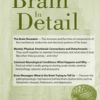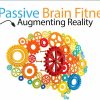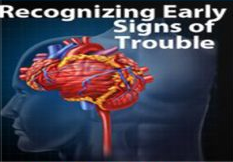Sean G. Smith & Tom F. Gutchewsky – Recognizing Early Signs of Trouble
$199 Original price was: $199.$56Current price is: $56.
Shopping Instructions:
- DISCOUNT 15% : SHOP15
- Product Delivery: Within 1 – 12 hours after purchase.
Available for Pre-Order. This product will be available within a few days.
Sean G. Smith & Tom F. Gutchewsky – Recognizing Early Signs of Trouble
Heart Disease and Stroke are the two leading causes of death in the world…
You NEED to understand cardiac and neurologic anatomy and physiology… yet the complexities of these body systems can overwhelm even the most seasoned nurses. The key to avoiding life–threatening complications is to identify subtle changes in your patient’s symptoms early.
Now in this comprehensive online course, two hand–picked experts with 40+ years of combined experience give you the tools you need to identify presenting and evolving symptoms, so you can confidently intervene before a situation becomes life–threatening.
Walk away with clinical pearls like:
- Most recent pharmacological treatments available for cardiac and neuro emergencies
- Key insights to anticipate when an invasive procedure like angioplasty, stenting or surgery is likely
- How patients with asymptomatic VPBs in the peri–infarct period, when given antiarrhythmic drugs, can have an increased risk for mortality
- Which therapeutic treatment will yield the best results based on current ICP
- The latest evidence–based strategies for neuro trauma
- And so much more!
Module 1: Acute Cardiac Pathology
- Review angiogram films to identify specific pathology including culprit vs. chronic lesions
- Identify changes of acute MV regurgitation caused by myocardial ischemia on echocardiogram
- Observe how an intra-aortic balloon pump can stabilize a patient with ventral septal defect caused by MI prior to surgery
- Discuss which drugs are most beneficial for specific conditions and adhere to AHA recommendations
Module 2: Aortic Dissection
- Stanford types A and B – including common causes, which patients are at risk, and typical presenting symptoms
- Review diagnostic techniques and images including echocardiogram, TEE, and CT scans for pathological findings
- Which patients require emergency surgery vs. medical management?
- Explore the latest surgical techniques used in treatment
Module 3: Cardiac Tamponade
- Identify the symptoms of cardiac tamponade including the components of Beck’s triad
- Learn the causes of pericardial tamponade
- Review diagnostic echocardiogram and CT images
- Appropriate treatments including pericardiocentesis and pericardial window surgical procedures
Module 4: Cardiogenic Shock
- Understand the multiple causes of cardiogenic shock to identify early symptoms
- Compare the function of diagnostic techniques, including echocardiogram and swan ganz catheters
- Gain insight into typical and more advanced treatments including fluid resuscitation, medication, interventions, intra-aortic balloon pumps, ECMO, and VADs
Module 5: Cardiac Arrhythmias
- Identify acute cardiac arrhythmias including atrial fibrillation/flutter, 3rd-degree heart block and ventricular tachycardia by EKG findings
- Review common etiologies and risk factors
- Explore treatment options including medication, electricity, and ablation procedures
Module 1: Neuroanatomy
- Summarize neuroanatomy as applicable to complex neurological patients
- Overview of the nervous system: Central Nervous System, Peripheral Nervous System, and Autonomic Nervous System
- Identify function, formation, properties, and flow of cerebral spinal fluid
Module 2: Neurological Assessment
- Review neurologic assessment strategies and changes associated with pathological conditions
- What you need to do with your assessment results
Module 3: Overview of Seizures
- Specify the clinical presentation and treatment recommendations for seizure types and epilepsy
- Go over what your responsibilities are before, during, and after your patient has a seizure
- How to, and what to be cautious about with post traumatic seizure medications
Module 4: Brain Injuries, Spinal Cord Injuries, and Lesions
- Recognizing the signs and symptoms of a brain injury
- Identify essential management strategies for patients with spinal cord injury and head injuries
- Discuss secondary injuries of spinal cord and brain trauma
Module 5: Critical Care Management of the Neuroscience Patient
- Correlate increased intracranial pressures with expected causes and critical care management
- Overview of causes, symptoms, and management of Diabetes Insipidus
Module 6: Migraines and Headaches
- Identify essential management strategies for patients with complicated headache & migraines
- Review the diagnostic criteria and management strategies for patients with Alzheimer’s Disease, Multiple Sclerosis, Parkinson’s Disease, Guillain-Barre Syndrome, Myasthenia Gravis, and Amyotrophic Lateral Sclerosis
Would you like to receive Sean G. Smith & Tom F. Gutchewsky – Recognizing Early Signs of Trouble ?
Full-color pocket guide for focused assessments, treatments, interventions and preventions – right at your fingertips.
Loaded with references and tools to build critical thinking, covering cardiovascular, IV therapy, pulmonary, multisystem and shock, neurological, and critical skills. An easy to use resource for you to deliver high-quality care.
Watch your email for an order confirmation with the account access link to get started on materials instantly. View any of the video modules online at your convenience. You will have unlimited access to the videos online, plus you can download everything for future reference! Plus, use the CE21 Mobile™ app to access the course content on-the-go, wherever and whenever you want on your mobile devices.
Related products
NLP & Hypnosis
NLP & Hypnosis
NLP & Hypnosis
Joseph Cohen – The SelfHacked Secrets To Understanding Why You Are Sick And How To Get Well
NLP & Hypnosis
NLP & Hypnosis
NLP & Hypnosis
NLP & Hypnosis












